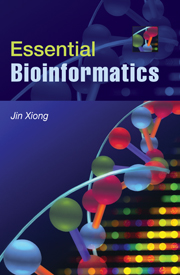Book contents
- Frontmatter
- Contents
- Preface
- SECTION I INTRODUCTION AND BIOLOGICAL DATABASES
- SECTION II SEQUENCE ALIGNMENT
- SECTION III GENE AND PROMOTER PREDICTION
- SECTION IV MOLECULAR PHYLOGENETICS
- SECTION V STRUCTURAL BIOINFORMATICS
- 12 Protein Structure Basics
- 13 Protein Structure Visualization, Comparison, and Classification
- 14 Protein Secondary Structure Prediction
- 15 Protein Tertiary Structure Prediction
- 16 RNA Structure Prediction
- SECTION V GENOMICS AND PROTEOMICS
- APPENDIX
- Index
- Plate section
- References
13 - Protein Structure Visualization, Comparison, and Classification
Published online by Cambridge University Press: 05 June 2012
- Frontmatter
- Contents
- Preface
- SECTION I INTRODUCTION AND BIOLOGICAL DATABASES
- SECTION II SEQUENCE ALIGNMENT
- SECTION III GENE AND PROMOTER PREDICTION
- SECTION IV MOLECULAR PHYLOGENETICS
- SECTION V STRUCTURAL BIOINFORMATICS
- 12 Protein Structure Basics
- 13 Protein Structure Visualization, Comparison, and Classification
- 14 Protein Secondary Structure Prediction
- 15 Protein Tertiary Structure Prediction
- 16 RNA Structure Prediction
- SECTION V GENOMICS AND PROTEOMICS
- APPENDIX
- Index
- Plate section
- References
Summary
Once a protein structure has been solved, the structure has to be presented in a three-dimensional view on the basis of the solved Cartesian coordinates. Before computer visualization software was developed, molecular structures were represented by physical models of metal wires, rods, and spheres. With the development of computer hardware and software technology, sophisticated computer graphics programs have been developed for visualizing and manipulating complicated three-dimensional structures. The computer graphics help to analyze and compare protein structures to gain insight to functions of the proteins.
PROTEIN STRUCTURAL VISUALIZATION
The main feature of computer visualization programs is interactivity, which allows users to visually manipulate the structural images through a graphical user interface. At the touch of a mouse button, a user can move, rotate, and zoom an atomic model on a computer screen in real time, or examine any portion of the structure in great detail, as well as draw it in various forms in different colors. Further manipulations can include changing the conformation of a structure by protein modeling or matching a ligand to an enzyme active site through docking exercises.
Because a Protein Data Bank (PDB) data file for a protein structure contains only x, y, and z coordinates of atoms (see Chapter 12), the most basic requirement for a visualization program is to build connectivity between atoms to make a view of a molecule.
- Type
- Chapter
- Information
- Essential Bioinformatics , pp. 187 - 199Publisher: Cambridge University PressPrint publication year: 2006



